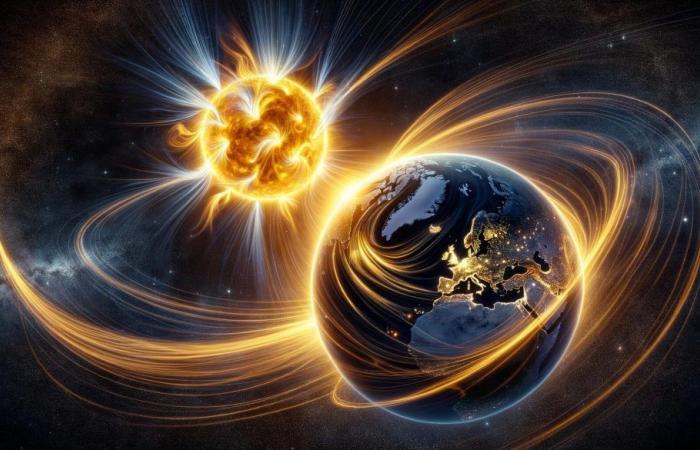“2 or 3 coronal mass ejections (CMEs), which have left the Sun in recent days, are expected to graze the Earth’s magnetic field from 1st to 3rd July“: this is what the specialized website reports SpaceWeather.comedited by astrophysicist Tony Phillips. “The most effective strike will probably come on July 3 from a CME hurled into space by an eruption of magnetic filaments in the southern hemisphere of the Sun. Minor geomagnetic storms are possible. classe G1 before July 4th“.
What is a filament?
The filaments are long thin structures that extend across the surface of the star, regions of very dense and “cold” gas that form due to the intense solar magnetic fields and appear dark precisely because they are colder than the surrounding regions.
These particular very elongated structures can occasionally also cause eruptions of solar material into space.
What is a coronal mass ejection (CME)
And’coronal mass ejection (CME) is a massive emission of plasma and magnetic fields from the solar corona, its outer atmosphere. It is caused by a sudden release of accumulated magnetic energy. This can happen following a reorganization of the solar magnetic fields, often linked to the activity of sunspots. During a CME, the solar magnetic field distorts and releases enormous amounts of charged matter, mainly protons and electrons, into the interplanetary environment. These emissions can travel through interplanetary space at speeds ranging from hundreds to thousands of km/s. When they reach Earth, CMEs can interact with Earth’s magnetic field, causing geomagnetic storms. These storms can affect power grids, communications systems and orbiting satellites. Furthermore, charged particles accelerate along Earth’s magnetic field lines, creating spectacular polar auroras.
What is a geomagnetic storm?
A storm geomagnetica It is an event caused by the interaction between the Earth’s magnetic field and the solar windwhich is made up of charged particles coming from the Sun. When particularly intense, these interactions can cause disturbances in the Earth’s magnetosphere, with consequences for communications, electronic navigation systems and electrical grids.
The classification of geomagnetic storms from G1 to G5 is defined by the Space Weather Prediction Center (SWPC) of NOAA.
- G1 – Mild effects, with possible disturbances in satellite operations and high-frequency communications, but with low risk to electrical networks;
- G2 – Moderate effects, can cause disruptions in satellite communications, increase drag on GPS navigation systems and generate instability in power grids, especially at high latitudes;
- G3 – Significant effects, with possible radio blackouts in the polar regions, disturbances in GPS navigation and potential temporary damage to electrical networks;
- G4 – Severe effects, can cause extensive radio blackouts, disturbances in GPS navigation and damage to power grids leading to large-scale blackouts;
- G5 – Exceptionally severe effects, with the potential to damage satellites, disrupt global communications, disrupt GPS navigation, and cause widespread and prolonged blackouts in power grids.
Continue reading on MeteoWeb






